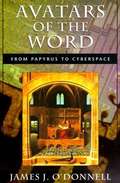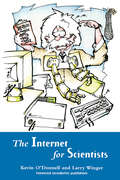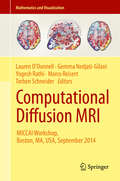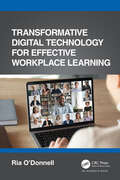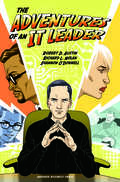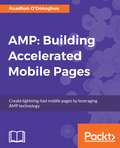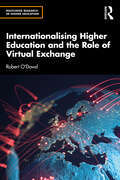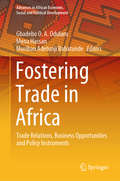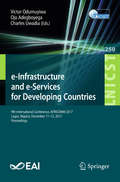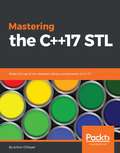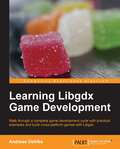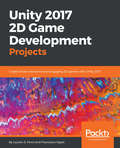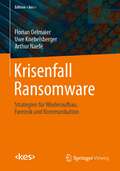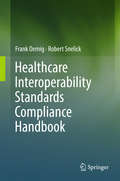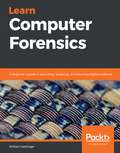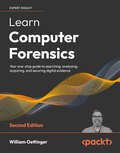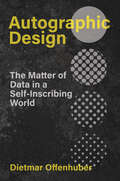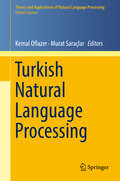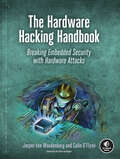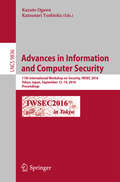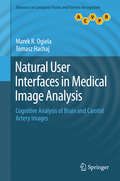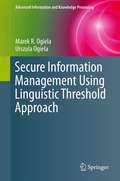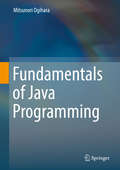- Table View
- List View
Avatars of the Word: From Papyrus to Cyberspace
by James J. O'DonnellConsiders the future of the printed word given the growth of electronic communication as a modern medium for information and culture. In investigating past cultural transitions, such as from the spoken to the written word, or from manuscript to the printing press, O'Donnell (classical studies, U. of Pennsylvania) reveals the contemporary crossroads between media as contiguous with the history of communication. Annotation c. by Book News, Inc. , Portland, Or.
Internet for Scientists
by Kevin O'Donnell Larry WingerThis book provides a straightforward manual and review handbook for accessing and using the resources of the Internet in the day to day labours of the working scientist. It addresses the problem of how to cope with an army who have discovered a whole new toy shop full of goodies.
Computational Diffusion MRI: MICCAI Workshop, Boston, MA, USA, September 2014 (Mathematics and Visualization)
by Lauren O'Donnell Gemma Nedjati-Gilani Yogesh Rathi Marco Reisert Torben SchneiderThis book contains papers presented at the 2014 MICCAI Workshop on Computational Diffusion MRI, CDMRI’14. Detailing new computational methods applied to diffusion magnetic resonance imaging data, it offers readers a snapshot of the current state of the art and covers a wide range of topics from fundamental theoretical work on mathematical modeling to the development and evaluation of robust algorithms and applications in neuroscientific studies and clinical practice.Inside, readers will find information on brain network analysis, mathematical modeling for clinical applications, tissue microstructure imaging, super-resolution methods, signal reconstruction, visualization, and more. Contributions include both careful mathematical derivations and a large number of rich full-color visualizations.Computational techniques are key to the continued success and development of diffusion MRI and to its widespread transfer into the clinic. This volume will offer a valuable starting point for anyone interested in learning computational diffusion MRI. It also offers new perspectives and insights on current research challenges for those currently in the field. The book will be of interest to researchers and practitioners in computer science, MR physics, and applied mathematics.
Transformative Digital Technology for Effective Workplace Learning
by Ria O'DonnellIn a world bursting with new information, ideas, opportunities, and technological advancements, it is time to rethink how continuous learning shapes our future. Amidst the ongoing digital revolution, widespread educational reform, and the most significant global pandemic of our lifetimes, we are at a pivotal time in history. Transformative Digital Technology for Effective Workplace Learning explores the technological developments that are rapidly unfolding in the workplace and those that support workplace training. What emerges is that the rate of change and the possibilities for improvement are more extensive than many of us might have suspected. From artificial intelligence to virtual reality, from data analytics, to adaptive learning, there is the capacity for significant innovation and opportunity if harnessed in the right ways. The book offers an overview of several critical issues that face the future of the workplace and examines them through the lens of lifelong learning. The book begins by conveying the current impacts on the workplace and how the internal function of Learning and Development has evolved. It then considers the eight learning imperatives that drive workplace learning and then looks at the future workplace. Exploring technological frameworks for digitally enhanced workplace learning, the book takes a deep dive into the capabilities of immersive technologies, as well as into the insights enabled through learning analytics. The goal of this book is not to merely describe technological advancements in the workplace but instead, to challenge the status quo and think critically about the future that lies ahead. One aim is to have business leaders understand the necessity for ongoing workplace learning. Another is that individuals appreciate that lifelong learning is the new social norm. Ongoing education allows people to become more open to change and less anxious about new experiences. Developing a growth mindset and adopting a company culture that says everyone can learn new things and continue to improve their performance will become the standard. Most importantly, as the business world is reconfigured before our very eyes, ongoing learning must become an economic imperative.
Analysis of Boolean Functions
by Ryan O'DonnellBoolean functions are perhaps the most basic objects of study in theoretical computer science. They also arise in other areas of mathematics, including combinatorics, statistical physics, and mathematical social choice. The field of analysis of Boolean functions seeks to understand them via their Fourier transform and other analytic methods. This text gives a thorough overview of the field, beginning with the most basic definitions and proceeding to advanced topics such as hypercontractivity and isoperimetry. Each chapter includes a "highlight application" such as Arrow's theorem from economics, the Goldreich-Levin algorithm from cryptography/learning theory, Håstad's NP-hardness of approximation results, and "sharp threshold" theorems for random graph properties. The book includes roughly 450 exercises and can be used as the basis of a one-semester graduate course. It should appeal to advanced undergraduates, graduate students, and researchers in computer science theory and related mathematical fields.
Adventures of an It Leader
by Shannon O'Donnell Richard L. Nolan Robert D. AustinBecoming an effective IT manager presents a host of challenges--from anticipating emerging technology to managing relationships with vendors, employees, and other managers. A good IT manager must also be a strong business leader.This book invites you to accompany new CIO Jim Barton to better understand the role of IT in your organization. You'll see Jim struggle through a challenging first year, handling (and fumbling) situations that, although fictional, are based on true events.You can read this book from beginning to end, or treat is as a series of cases. You can also skip around to address your most pressing needs. For example, need to learn about crisis management and security? Read chapters 10-12. You can formulate your own responses to a CIO's obstacles by reading the authors' regular "Reflection" questions.You'll turn to this book many times as you face IT-related issues in your own career.
AMP: Building Accelerated Mobile Pages
by Ruadhan O'DonoghueEngineer naturally lean web pages and leverage the latest web platform features to dramatically boost page speed About This Book • The first book for web developers that shows how to put AMP to work • Improve your website's mobile experience and get more traffic • Practical methods to achieve a step change in performance quickly and easily Who This Book Is For This book is for experienced web developers who are aware of the impact of slow-loading web pages on conversion rates and user engagement, and who are seeking to serve content to their end users in a rich and enticing way using the Accelerated Mobile Pages framework. You should be familiar with HTML5, CSS3, JavaScript, and JSON. What You Will Learn • Build, validate, and deploy AMP pages • Create interactive user notifications, navigation menus, accordions, contact pages with forms and maps • Monetize your traffic with a variety of ad styles and providers • Analyze your traffic by integrating analytics providers and tracking user-behavior along several dimensions • Embed social media with amp-youtube, amp-instagram, amp-twitter, and amp-facebook • Build e-commerce functionality including product pages and shopping carts • Deliver rich media experiences using AMP custom elements • Use advanced deployment techniques to extend functionality • Install ServiceWorkers and build Progressive Web Apps for offline use In Detail Google introduced the Accelerated Mobile Pages (AMP) project to give mobile users lightning-fast response times when accessing web pages on mobile devices. AMP delivers great user experiences by providing a framework for optimizing web pages that otherwise would take much longer to load on a mobile platform. This book shows how to solve page performance issues using the mobile web technologies available today. You will learn how to build instant-loading web pages, and have them featured more prominently on Google searches. If you want your website to succeed on mobile, if you care about SEO, and if you want to stay competitive, then this book is for you! You will go on a mobile web development journey that demonstrates with concrete examples how to build lightning-fast pages that will keep your visitors on-site and happy. This journey begins by showing how to build a simple blog article-style web page using AMP. As new concepts are introduced this page is gradually refined until you will have the skills and confidence to build a variety of rich and interactive mobile web pages. These will include e-commerce product pages, interactive forms and menus, maps and commenting systems, and even Progressive Web Apps. Style and approach Get step-by-step instructions to build web pages of different types, gain expert tricks to brand your pages without bloating them, and see methods to embed advertising.
Internationalising Higher Education and the Role of Virtual Exchange (Routledge Research in Higher Education)
by Robert O'DowdThis volume introduces Virtual Exchange (VE) as an innovative form of online intercultural learning and investigates the myriad of ways VE is being carried out across universities, ultimately arguing for its integration into university internationalisation policies and course curricula. Against the backdrop of increased digitalisation initiatives throughout universities given the effects of the pandemic, chapters focus not only on providing new research findings, but also on providing a comprehensive introduction and argumentation for the use of VE in university education and also in demonstrating how it can be put into use by both university decision-makers and educators. Reviewing the limitations of the activity, this timely work also fundamentally posits how VE and blended mobility more broadly could be developed in future higher education initiatives. This book will be of interest to researchers, academics, scholars, and students involved with Open & Distance Education and eLearning, approaches to internationalisation in education, and the study of higher education more broadly. Those interested in innovative methods for teaching and learning, as well as educational research, will also benefit from this volume.
Fostering Trade in Africa: Trade Relations, Business Opportunities and Policy Instruments (Advances in African Economic, Social and Political Development)
by Gbadebo O. A. Odularu Mena Hassan Musibau Adetunji BabatundeThis book discusses trade relations and facilitation issues at both the regional and the continental African level, highlighting the increasing business opportunities and challenges that confront Africa in the digital age. It also examines the effects of trade policies and other policy instruments on Africa’s economic development and presents workable policy measures for a more business-friendly ecosystem. Discussing various topics, including trade relations between African countries, African and international trade agreements, and trade liberalization policies, the book appeals to scholars of economics, business and management as well as professionals and policymakers interested in fostering free trade and sustainable business development in Africa.
e-Infrastructure and e-Services for Developing Countries: 9th International Conference, Africomm 2017, Lagos, Nigeria, December 11-12, 2017, Proceedings (Lecture Notes of the Institute for Computer Sciences, Social Informatics and Telecommunications Engineering #250)
by Victor Odumuyiwa Ojo Adegboyega Charles UwadiaThis book constitutes the thoroughly refereed proceedings of the 9th International Conference on e-Infrastructure and e-Services for Developing Countries, AFRICOMM 2017, held in Lagos, Nigeria, in December 2017. The 19 full papers, 12 short papers and 5 workshop papers were carefully selected from 81 submissions. The papers were presented in eight sessions: e-government, network and load management, digital inclusion, knowledge extraction, representation and sharing, networks and communications, ICT applications for development, decision support, e-business and e-services, internet measurement.
Mastering the C++17 STL
by Arthur O'DwyerThis book breaks down the C++ STL, teaching you how to extract its gems and apply them to your programming. About This Book • Boost your productivity as a C++ developer with the latest features of C++17 • Develop high-quality, fast, and portable applications with the varied features of the STL • Migrate from older versions (C++11, C++14) to C++17 Who This Book Is For This book is for developers who would like to master the C++ STL and make full use of its components. Prior C++ knowledge is assumed. What You Will Learn • Make your own iterator types, allocators, and thread pools. • Master every standard container and every standard algorithm. • Improve your code by replacing new/delete with smart pointers. • Understand the difference between monomorphic algorithms, polymorphic algorithms, and generic algorithms. • Learn the meaning and applications of vocabulary type, product type and sum type. In Detail Modern C++ has come a long way since 2011. The latest update, C++17, has just been ratified and several implementations are on the way. This book is your guide to the C++ standard library, including the very latest C++17 features. The book starts by exploring the C++ Standard Template Library in depth. You will learn the key differences between classical polymorphism and generic programming, the foundation of the STL. You will also learn how to use the various algorithms and containers in the STL to suit your programming needs. The next module delves into the tools of modern C++. Here you will learn about algebraic types such as std::optional, vocabulary types such as std::function, smart pointers, and synchronization primitives such as std::atomic and std::mutex. In the final module, you will learn about C++'s support for regular expressions and file I/O. By the end of the book you will be proficient in using the C++17 standard library to implement real programs, and you'll have gained a solid understanding of the library's own internals. Style and approach This book takes a concise but comprehensive approach to explaining and applying the C++ STL, one feature at a time.
Learning Libgdx Game Development
by Andreas OehlkeA clear and practical guide to building games in libGDX.This book is great for Indie and existing game developers, as well as those who want to get started with game development using libGDX. Java game knowledge of game development basics is recommended.
Unity 2017 2D Game Development Projects: Create three interactive and engaging 2D games with Unity 2017
by Andreas Oehlke Lauren S. FerroBuild classic arcade, shooter and platform games with Unity 2D toolset Key Features Leverage the amazing new functionalities of the latest Unity 2017 2D toolkit. Learn to create 2D characters, animations, fast and efficient game play experiences while keeping your games very lightweight Create engaging games that enable you to perform intergalactic warfare and also fun games similar to temple run and so on. Book Description 2D games are everywhere! Timeless and popular, 2D games represent a substantial segment of the games market. The Unity engine has revolutionized the gaming industry, by making it easier for game developers to create quality games on a budget. If you are looking for a guide to create 2D games using Unity 2017, look no further. With this book, you will learn all the essentials of 2D game development by creating three epic games in a step-by-step manner throughout the course of this book. The first game will have you collecting as many cakes as possible. The second will transport you to outer space to traverse as far as possible while avoiding enemy spaceships. The last game will have you running and jumping across platforms to collect coins and other exotic items. Throughout all these three games, you will create characters, make them move, and create some enemies. And then, of course, write code to destroy them!. After showing you the necessities of creating a game, this book will then help you to porting the game to a mobile platform, and provide a path to publish it on the stores. By the end of this book, you will not only have created three complete great games, but be able to apply your knowledge to create and deploy your own games. What you will learn Work with Unity 2017's new 2D workflow and create a 2D scene Set the scene with different types of backgrounds, either static or dynamically using a tileset Bring your character to life through simple animations Understand the core concepts of programming by creating basic code that controls a character and destroys an enemy Create buttons and game controls by using code snippets for input detection Develop three 2D games from genres such as classic arcade, space shooter, and platformer games Add audio and feedback and deploy your gamesWho this book is for If you are interested in creating your very own 2D games from scratch, then this book will give you all the tools you need to succeed. No C# knowledge is required, all you need is basic coding and scripting knowledge. Whether you are completely new to Unity or have used Unity before and would like to learn about the new 2D features of Unity, this book is for you.
Krisenfall Ransomware: Strategien für Wiederaufbau, Forensik und Kommunikation (Edition <kes>)
by Florian Oelmaier Uwe Knebelsberger Arthur NaefeAnhand von mehr als 50 bearbeiteten Angriffen auf deutsche Firmen erörtern die Autoren das technische Vorgehen von Ransomwaregruppen, die richtige Reaktion im Krisenfall und die Möglichkeiten zur Prävention. Illustriert durch zahlreiche Screenshots von Erpresserschreiben, Darknetseiten & Verhandlungschats. Mit Gastbeiträgen von N. Weyerstall, Dr. Malek und C. Kurtz sowie von betroffenen Unternehmen.Dieses Buch ist mehr als nur eine Notfallanleitung für den eingetretenen Krisenfall. Um die eigene Verteidigung zu planen, lohnt es sich, den Ernstfall gedanklich durchzuspielen.
Healthcare Interoperability Standards Compliance Handbook
by Frank Oemig Robert SnelickThis book focuses on the development and use of interoperability standards related to healthcare information technology (HIT) and provides in-depth discussion of the associated essential aspects. The book explains the principles of conformance, examining how to improve the content of healthcare data exchange standards (including HL7 v2. x, V3/CDA, FHIR, CTS2, DICOM, EDIFACT, and ebXML), the rigor of conformance testing, and the interoperability capabilities of healthcare applications for the benefit of healthcare professionals who use HIT, developers of HIT applications, and healthcare consumers who aspire to be recipients of safe and effective health services facilitated through meaningful use of well-designed HIT. Readers will understand the common terms interoperability, conformance, compliance and compatibility, and be prepared to design and implement their own complex interoperable healthcare information system. Chapters address the practical aspects of the subject matter to enable application of previously theoretical concepts. The book provides real-world, concrete examples to explain how to apply the information, and includes many diagrams to illustrate relationships of entities and concepts described in the text. Designed for professionals and practitioners, this book is appropriate for implementers and developers of HIT, technical staff of information technology vendors participating in the development of standards and profiling initiatives, informatics professionals who design conformance testing tools, staff of information technology departments in healthcare institutions, and experts involved in standards development. Healthcare providers and leadership of provider organizations seeking a better understanding of conformance, interoperability, and IT certification processes will benefit from this book, as will students studying healthcare information technology.
Learn Computer Forensics: A beginner's guide to searching, analyzing, and securing digital evidence
by William OettingerGet up and running with collecting evidence using forensics best practices to present your findings in judicial or administrative proceedings Key Features Learn the core techniques of computer forensics to acquire and secure digital evidence skillfully Conduct a digital forensic examination and document the digital evidence collected Analyze security systems and overcome complex challenges with a variety of forensic investigations Book Description A computer forensics investigator must possess a variety of skills, including the ability to answer legal questions, gather and document evidence, and prepare for an investigation. This book will help you get up and running with using digital forensic tools and techniques to investigate cybercrimes successfully. Starting with an overview of forensics and all the open source and commercial tools needed to get the job done, you'll learn core forensic practices for searching databases and analyzing data over networks, personal devices, and web applications. You'll then learn how to acquire valuable information from different places, such as filesystems, e-mails, browser histories, and search queries, and capture data remotely. As you advance, this book will guide you through implementing forensic techniques on multiple platforms, such as Windows, Linux, and macOS, to demonstrate how to recover valuable information as evidence. Finally, you'll get to grips with presenting your findings efficiently in judicial or administrative proceedings. By the end of this book, you'll have developed a clear understanding of how to acquire, analyze, and present digital evidence like a proficient computer forensics investigator. What you will learn Understand investigative processes, the rules of evidence, and ethical guidelines Recognize and document different types of computer hardware Understand the boot process covering BIOS, UEFI, and the boot sequence Validate forensic hardware and software Discover the locations of common Windows artifacts Document your findings using technically correct terminology Who this book is for If you're an IT beginner, student, or an investigator in the public or private sector this book is for you.This book will also help professionals and investigators who are new to incident response and digital forensics and interested in making a career in the cybersecurity domain.
Learn Computer Forensics: Your one-stop guide to searching, analyzing, acquiring, and securing digital evidence, 2nd Edition
by William OettingerLearn Computer Forensics from a veteran investigator and technical trainer and explore how to properly document digital evidence collectedKey FeaturesInvestigate the core methods of computer forensics to procure and secure advanced digital evidence skillfullyRecord the digital evidence collected and organize a forensic examination on itPerform an assortment of Windows scientific examinations to analyze and overcome complex challengesBook DescriptionComputer Forensics, being a broad topic, involves a variety of skills which will involve seizing electronic evidence, acquiring data from electronic evidence, data analysis, and finally developing a forensic report.This book will help you to build up the skills you need to work in a highly technical environment. This book's ideal goal is to get you up and running with forensics tools and techniques to successfully investigate crime and corporate misconduct. You will discover ways to collect personal information about an individual from online sources. You will also learn how criminal investigations are performed online while preserving data such as e-mails, images, and videos that may be important to a case. You will further explore networking and understand Network Topologies, IP Addressing, and Network Devices. Finally, you will how to write a proper forensic report, the most exciting portion of the forensic exam process.By the end of this book, you will have developed a clear understanding of how to acquire, analyze, and present digital evidence, like a proficient computer forensics investigator.What you will learnExplore the investigative process, rules of evidence, legal process, and ethical guidelinesUnderstand the difference between sectors, clusters, volumes, and file slackValidate forensic equipment, computer program, and examination methodsCreate and validate forensically sterile mediaGain the ability to draw conclusions based on the exam discoveriesRecord discoveries utilizing the technically correct terminologyDiscover the limitations and guidelines for RAM Capture and its toolsExplore timeline analysis, media analysis, string searches, and recovery of deleted dataWho this book is forThis book is for IT beginners, students, or an investigator in the public or private sector. This book will also help IT professionals who are new to incident response and digital forensics and are looking at choosing cybersecurity as their career. Individuals planning to pass the Certified Forensic Computer Examiner (CFCE) certification will also find this book useful.
Autographic Design: The Matter of Data in a Self-Inscribing World (metaLAB Projects)
by Dietmar OffenhuberAn ambitious vision for design based on the premise that data is material, not abstract.Data analysis and visualization are crucial tools in today's society, and digital representations have steadily become the default. Yet, more and more often, we find that citizen scientists, environmental activists, and forensic amateurs are using analog methods to present evidence of pollution, climate change, and the spread of disinformation. In this illuminating book, Dietmar Offenhuber presents a model for these practices, a model to make data generation accountable: autographic design.Autographic refers to the notion that every event inscribes itself in countless ways. Think of a sundial, for example—a perfectly autographic device that displays information on itself. Inspired by such post-digital practices of visualization and evidence construction, Offenhuber describes an approach to visualization based on the premise that data is a material entity rather than an abstract representation. Emerson wrote, &“Every act of the man inscribes itself in the memories of his fellows, and in his own manners and face.&” In Autographic Design, Offenhuber introduces a model for design that emphasizes traces, imprints, and self-inscriptions, turning them into sensory displays.In an age where misinformation is harder and harder to identify, Autographic Design makes an urgent and persuasive case for a different approach that calls attention to the production of data and its connection to the material world.
Introduction to Software Testing
by Jeff Offutt Paul AmmannExtensively class-tested, this textbook takes an innovative approach to software testing: it defines testing as the process of applying a few well-defined, general-purpose test criteria to a structure or model of the software. It incorporates the latest innovations in testing, including techniques to test modern types of software such as OO, web applications, and embedded software. The book contains numerous examples throughout. An instructors solution manual, PowerPoint slides, sample syllabi, additional examples and updates, testing tools for students, and example software programs in Java are available on an extensive website.
Turkish Natural Language Processing (Theory and Applications of Natural Language Processing)
by Kemal Oflazer Murat SaraçlarThis book brings together work on Turkish natural language and speech processing over the last 25 years, covering numerous fundamental tasks ranging from morphological processing and language modeling, to full-fledged deep parsing and machine translation, as well as computational resources developed along the way to enable most of this work. Owing to its complex morphology and free constituent order, Turkish has proved to be a fascinating language for natural language and speech processing research and applications.After an overview of the aspects of Turkish that make it challenging for natural language and speech processing tasks, this book discusses in detail the main tasks and applications of Turkish natural language and speech processing. A compendium of the work on Turkish natural language and speech processing, it is a valuable reference for new researchers considering computational work on Turkish, as well as a one-stop resource for commercial and research institutions planning to develop applications for Turkish. It also serves as a blueprint for similar work on other Turkic languages such as Azeri, Turkmen and Uzbek.
The Hardware Hacking Handbook: Breaking Embedded Security with Hardware Attacks
by Colin O'Flynn Jasper van WoudenbergThe Hardware Hacking Handbook takes you deep inside embedded devices to show how different kinds of attacks work, then guides you through each hack on real hardware.Embedded devices are chip-size microcomputers small enough to be included in the structure of the object they control, and they&’re everywhere—in phones, cars, credit cards, laptops, medical equipment, even critical infrastructure. This means understanding their security is critical. The Hardware Hacking Handbook takes you deep inside different types of embedded systems, revealing the designs, components, security limits, and reverse-engineering challenges you need to know for executing effective hardware attacks.Written with wit and infused with hands-on lab experiments, this handbook puts you in the role of an attacker interested in breaking security to do good. Starting with a crash course on the architecture of embedded devices, threat modeling, and attack trees, you&’ll go on to explore hardware interfaces, ports and communication protocols, electrical signaling, tips for analyzing firmware images, and more. Along the way, you&’ll use a home testing lab to perform fault-injection, side-channel (SCA), and simple and differential power analysis (SPA/DPA) attacks on a variety of real devices, such as a crypto wallet. The authors also share insights into real-life attacks on embedded systems, including Sony&’s PlayStation 3, the Xbox 360, and Philips Hue lights, and provide an appendix of the equipment needed for your hardware hacking lab – like a multimeter and an oscilloscope – with options for every type of budget. You&’ll learn: • How to model security threats, using attacker profiles, assets, objectives, and countermeasures • Electrical basics that will help you understand communication interfaces, signaling, and measurement • How to identify injection points for executing clock, voltage, electromagnetic, laser, and body-biasing fault attacks, as well as practical injection tips • How to use timing and power analysis attacks to extract passwords and cryptographic keys • Techniques for leveling up both simple and differential power analysis, from practical measurement tips to filtering, processing, and visualizationWhether you&’re an industry engineer tasked with understanding these attacks, a student starting out in the field, or an electronics hobbyist curious about replicating existing work, The Hardware Hacking Handbook is an indispensable resource – one you&’ll always want to have onhand.
Advances in Information and Computer Security: 11th International Workshop on Security, IWSEC 2016, Tokyo, Japan, September 12-14, 2016, Proceedings (Lecture Notes in Computer Science #9836)
by Kazuto Ogawa Katsunari YoshiokaThis book constitutes the refereed proceedings of the 11th International Workshop on Security, IWSEC 2016, held in Tokyo, Japan, in September 2016. The 15 regular papers and 4 short papers presented in this volume were carefully reviewed and selected from 53 submissions. They were organized in topical sections named: system security; searchable encryption; cryptanalysis; permutation and symmetric encryption; privacy preserving; hardware security; post-quantum cryptography; and paring computation.
Natural User Interfaces in Medical Image Analysis
by Marek R. Ogiela Tomasz HachajThis unique text/reference highlights a selection of practical applications of advanced image analysis methods for medical images. The book covers the complete methodology for processing, analysing and interpreting diagnostic results of sample CT images. The text also presents significant problems related to new approaches and paradigms in image understanding and semantic image analysis. To further engage the reader, example source code is provided for the implemented algorithms in the described solutions. Features: describes the most important methods and algorithms used for image analysis; examines the fundamentals of cognitive computer image analysis for computer-aided diagnosis and semantic image description; presents original approaches for the semantic analysis of CT perfusion and CT angiography images of the brain and carotid artery; discusses techniques for creating 3D visualisations of large datasets; reviews natural user interfaces in medical imaging systems, including GDL technology.
Secure Information Management Using Linguistic Threshold Approach
by Marek R. Ogiela Urszula OgielaIn recent years, cryptographic techniques for protecting and hiding secret information have been included in directions of research on intelligent information management. Data can be managed securely due to the use of algorithms for ensuring the confidentiality of data, information splitting techniques as well as protocols for sharing information and methods of its reconstruction. This is why techniques of advanced splitting and reconstruction of information form the primary subject of Secure Information Management Using Linguistic Threshold Approach, whose main purpose is to discuss the so-called linguistic threshold schemes for information sharing. An attempt is also made to describe the opportunities of using these techniques to create new models of managing strategic information shared within a commercial organisation or a state institution. Such information is specially protected, and its contents are used only if the authorised users are enabled to access it. This monograph attempts to define a model structure of information flow and for assigning information shares to particular groups of individuals concerned. The proposed information flow model can be integrated into practical solutions within any organisation or institution, improving the functionality of its legacy information systems. The use of strong mathematical cryptographic models to manage information constitutes a scientific innovation and a demonstration of the methods and opportunities of using advanced techniques for confidentially exchanging information in tasks supporting data flow within a commercial organisation. The interdisciplinary nature of the solutions proposed means that the subject of linguistic threshold schemes forming part of intelligent information management becomes a new challenge for the research and application work carried out.The authors of this monograph hope that it will guide readers on an interesting journey through the cutting edge solution in the field of secure information management.
Fundamentals of Java Programming
by Mitsunori OgiharaMaking extensive use of examples, this textbook on Java programming teaches the fundamental skills for getting started in a command-line environment. Meant to be used for a one-semester course to build solid foundations in Java, Fundamentals of Java Programming eschews second-semester content to concentrate on over 180 code examples and 250 exercises.Key object classes (String, Scanner, PrintStream, Arrays, and File) are included to get started in Java programming. The programs are explained with almost line-by-line descriptions, also with chapter-by-chapter coding exercises.Teaching resources include solutions to the exercises, as well as digital lecture slides.
